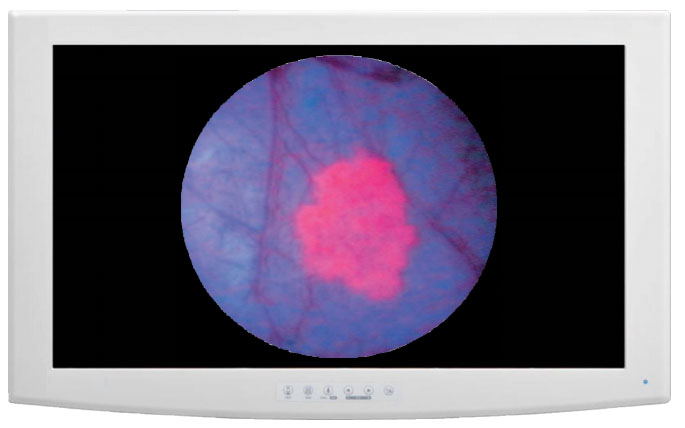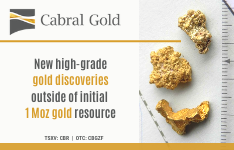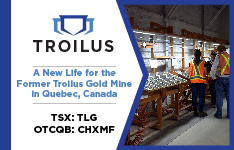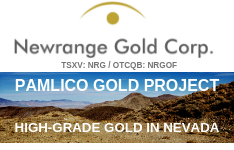The Life Sciences Report: You have written about the inherent problems with investment bank research. You imply that it is difficult for sellside analysts to perform unbiased diligence on stocks. Is there a place for sellside research, or should investors avoid it?
MW: Actually, there will always be a place for sellside analysts. Investors should not avoid sellside research. However, in some sectors, like biotechnology, it's getting more challenging because most investment banks, especially the larger ones, are focusing on large-cap companies. They don't do any reports on the smaller companies. The reason is very simple: They earn less money with the smaller companies' initial public offerings or secondary placements of equity or debt. It boils down to how much income can be derived. That's why I think there is definitely a place for independent research, which focuses more on micro- and small-cap companies. Small companies are especially abundant in the biotech sector.
"Regeneus Ltd. could be Australia's second success story in the stem cell industry."
There is also the reality that only so many analysts cover the sector. If an investment bank utilizes its resources—its analysts, its energy and its time—on small-cap companies, it cannot earn back what it puts into deals. The amount of capital raised and the trading volume cannot overcome the costs.
And there is one more thing. The micro- and small-cap biotech investor is a retail investor, but the larger investment bank client base is usually the institutional investor community, and institutional investors cannot invest in most small-cap companies.
TLSR: I note that you follow some companies that may only have one or two analysts following them. How do you begin your research on these small- and micro-cap biotech companies? How do you test the technology platforms for validity?
MW: The first source of information is, of course, management. Then we want to see if the technology and pipeline has potential. We then go into market research and make comparisons with larger companies that already have proven technologies in those specific disease indications. We have an advisory board of independent consultants who have background and experience within the biotech industry, and they provide us with insight and second opinions on technologies that are being developed. That way we can compare technologies internally and see if they might prove interesting for investors.
TLSR: Marcel, you do fee-based research. Please explain what that means.
MW: We are paid by the companies themselves—and we always make it quite transparent that we are paid by the companies. But the valuations that we determine are our own responsibility. The company does not have the last say on valuation. We must remain skeptical and critical in our selection process, to maintain our credibility with investors. We have a network of potential investors that we send our reports out to, and they trust us. Sometimes it happens, after first discussions and due diligence, that we still come to the conclusion that we cannot proceed.
TLSR: I'm looking at a table of stocks in your coverage. Most are below a $200 million ($200M) market cap, and you even have a couple of names under $100M. You mentioned that institutional investors really can't own very small stocks. How does a stock catch on so that people start to bid up the price, and perhaps ultimately grow large enough for an institutional investor?
MW: It actually starts with retail investors for most companies. In the beginning, companies are very dependent on the liquidity and the volumes created by the retail investor. But companies always want to aim at the more sophisticated investors.
"Resverlogix Corp.'s strategy is to start with the clinical trial, derive data, and create value to increase the likelihood of a partnership deal with a large pharmaceutical company."
Smaller-cap institutional investors begin moving into the stock as soon as volumes become large enough that they can buy and sell. However, what we are now seeing—and this is especially applicable for small Australian companies—is that quite a lot of volume is still generated by retail investors. If a company does a secondary offering, we may see so-called family offices buy in. They don't need to buy on the market, but they participate in placements. What we find interesting with these family offices is that, in terms of their size and potential for buying, they can be compared to institutional investors. The difference is that they seem to have long-term horizons and are not bothered by day-to-day trading volatility.
TLSR: We tend to think of family offices as being more conservative in their investment preferences. It seems counterintuitive that they would own small-cap biotech. Why do they buy, and why do they hold for the longer term?
MW: Usually, family office investors want to invest in biotechnology for another motive. They may want to invest in a new technology that is addressing a certain illness in their own family. That is a very powerful motivation. These investors prove to be quite solid and trustworthy as shareholders in the long term, and they also provide a source of capital for a secondary placement of shares.
TLSR: Let's talk about some companies.
MW: Regeneus Ltd. (RGS:ASX) is an Australia-based company located in Pymble, New South Wales. What you see in Australia is that market valuations for companies are, on average, quite small. This has to do with the fact that there's not much venture capital or private equity in Australia, and so the threshold for companies to go public is much lower than in the U.S. or in Europe. Another thing is that the retail market is much larger in Australia compared to the U.S. or Europe. Regeneus is an example of a company with that type of shareholder base.
The company's market cap is just ~AU$17M. It's in regenerative medicine, and its technology platform utilizes human fat cells—adipose-derived stem cells. It has a Phase 1 program with Progenza (allogeneic adipose-derived mesenchymal stem cells) for osteoarthritis in the knees. The company is also developing cancer vaccines, and has both human and animal therapeutic cancer vaccine programs. In fact, the company has two divisions—one in human health and one in animal health—both pursuing osteoarthritis and cancer.
TLSR: The company has a canine cancer vaccine called Kvax. It's a broad-based immunotherapy, and is now in marketing trials in the U.S. and in Australia. Is the human cancer vaccine in some way related to the canine cancer vaccine?
MW: Yes. Actually, the basis is the same. The results and knowledge the company is getting from the animal trials are helping in the clinical trials it's setting up for the humans. In that sense, there is definitely a synergy.
The company is mostly focused on osteoarthritis, especially in the knees, but it is also looking to develop its stem cell capabilities for other musculoskeletal disorders, which is where the larger markets are. In that sense, it is very much aiming for a partnership in Japan. We expect that a partnership in this area will be announced very soon—in a matter of weeks. This can have a substantial impact on the company's share price.
"There is definitely a place for independent research, which focuses more on micro- and small-cap companies."
Japan is important for Regeneus because, when you look at legislation in Japan with regard to stem cell technology, it's quite advanced. In November 2013, Japanese lawmakers passed the Pharmaceuticals and Medical Devices Act, which created a new division for regenerative medicine products and regulated these products on a fast-track basis. It is much easier to develop products from stem cell technology and to get them on the market. Regeneus hopes to profit from that.
When you look at the whole background of stem cell technology and regenerative medicine in Australia, it helps that one of the largest companies on the market, Mesoblast Ltd. (MESO:NASDAQ; MSB:ASE; MBLTY:OTCPK), is also a stem cell company, and it is already very far along in this subsector. Mesoblast has a large partnership with U.S.-based Celgene Corp. (CELG:NASDAQ), a large-cap biotech company. Regeneus could be Australia's second success story in this industry. Mesoblast did get some negative feedback last year, and there were some delays, which reflects negatively on a company like Regeneus. It's a two-way street.
TLSR: What is the clinical status of Progenza?
MW: Regeneus is enrolling patients in Phase 1 now, and dosing the first cohort of 10. The final cohort will start in the next month or so.
TLSR: How does Regeneus justify all of its programs? Why it doesn't sell some off, get some cash, and devote all its energy and resources to its human therapeutic vaccine and osteoarthritis programs?
MW: I definitely agree that the company should be more focused, especially this year. I also think a potential Japanese licensing agreement, when announced, would be a trigger for Regeneus to focus more on its osteoarthritis program. In the longer run, I think the company should divest the whole animal health division and focus completely on the human health, specifically osteoarthritis.
TLSR: Could you go to the next name, please?
MW: Resverlogix Corp. (RVX:TSX) is based in Canada and is in a completely different part of the industry. It is focused on cardiovascular diseases, and its lead product, an epigenetic inhibitor called RVX-208 (apabetalone), aims to increase levels of apolipoprotein A1 (ApoA1) by inhibiting bromodomain and extraterminal domain (BET) protein. ApoA1 is a component of high-density lipoprotein (HDL), the good cholesterol, and its levels are raised with this drug.
"It starts with retail investors for most companies, but companies always want to aim at more sophisticated investors."
Resverlogix recently started a Phase 3 trial in type 2 diabetes patients at high risk for cardiovascular disease. When you look at the sector of drugs for cardiovascular diseases, you see that very big companies like Pfizer Inc. (PFE:NYSE) and AstraZeneca Plc (AZN:NYSE) dominate the space with multibillion-dollar drugs at quite high prices. This is an area where Resverlogix could make a difference.
TLSR: This Phase 3 trial is going to enroll more than 2,400 patients. It's double-blind, placebo-controlled, and event-driven—the event would be the first major adverse cardiovascular event among patients. Final data collection is scheduled for September 2018. Resverlogix has a ~CA$150M market cap. How does a company of this size perform a Phase 3 trial of this magnitude with no partner?
MW: Cash on the balance sheet is roughly CA$40M, which is obviously not enough to do the whole trial. Resverlogix definitely needs a partnership with a larger company. Resverlogix's strategy is to make a few regional partnerships. It has already partnered with Shenzhen Hepalink Pharmaceutical Co. Ltd. (002399:SHE) for a license on RVX-208 in China, Hong Kong, Taiwan and Macau. The agreement gave Resverlogix cash to start the Phase 3 trial. I think Resverlogix's strategy is to start with the clinical trial, derive data, and create value to increase the likelihood of a partnership deal with a large pharmaceutical company. I would also mention that the company has quite a lot of data from previous trials that it can use.
Next to that, the company recently announced the start of an orphan disease program to study RVX-208 in complement-mediated diseases, and to start a Phase 2 proof-of-concept study in a small group of patients with paroxysmal nocturnal hemoglobinuria (PNH) in the next few months. PNH is a rare, acquired, hematopoietic stem cell disorder resulting in the production of defective red blood cells that are extremely susceptible to premature destruction by a person's own immune (complement) system.
TLSR: Do you imagine the interim data could drive a partnership?
MW: Absolutely. I think it's very important for a potential partner to see preliminary signs of efficacy and larger-scale safety data. A substantial deal could be struck. One of the potential partners could be AstraZeneca.
TLSR: It appears that investors have confidence in Resverlogix and this large study. Even though the stock is down ~5% over the last month, it's still up ~135% in Canadian dollars from one year ago, and that represents high relative strength in this current weak market. Do you see it that way?
MW: Yes. Resverlogix had quite a strong rally at the beginning of last year, and that has held it above water from a year ago. Also, Roche Holding AG (RHHBY:OTCQX) and Merck & Co. Inc. (MRK:NYSE) had cholesterol-lowering drugs in trials, but they were disappointments. Now we see scientists and companies looking for other ways to address the issue. This makes the Resverlogix approach look more interesting, not only for opinion leaders, but also for companies and investors in the cholesterol/cardiovascular space. That has driven the stock.
TLSR: Would you go to the next name, please?
MW: Biofrontera AG (B8F:FRA) is Germany-based and focused on skin diseases, specifically on basal cell carcinoma, a skin cancer that starts with too much exposure to the sun. It is also focused on a skin disease called actinic keratosis (AK). It has specific therapy called Ameluz (5-aminolevulinic acid hydrochloride). It's a photodynamic therapy using the company's BF-RhodoLED lamp, which emits a strong red light that activates the photosensitizing agent in the Ameluz gel. It showed very good results, and it is already on the market in the EU and in Switzerland. Biofrontera filed with the FDA for Ameluz in AK at the end of last year, and very recently the company announced the FDA did not ask for any additional information. The filing is in process and on track. Approval is expected by May of this year.
TLSR: Are marketing preparations underway for the U.S.?
MW: Yes, and Biofrontera is now starting to build up a sales force to sell Ameluz once it has approval. Last week, the company also announced very good Phase 3 results for the same product in basal cell carcinoma, which is a second indication it wants to file with the FDA. We expect significant potential sales revenues that will rise in the years to come.
The company also wants to discontinue its listing in London, on the AIM, and acquire a listing with NASDAQ, which makes sense considering Biofrontera is making plans to market its product for sale in the U.S.
TLSR: This stock has held steady over the past four weeks—maybe even gone up 5–6%—and it's been mostly negative during this same period. However, even with a product on the market in the EU and one expected to be approved in the U.S. in a couple of months, Biofrontera still only has a €51M market valuation. Why so low?
MW: This is a typical Europe-based company deriving most of its revenue from larger European countries, predominantly Germany. It's very much a local company still, but this will change with the approval of Ameluz by the FDA. Also, when you look at its share base, most of Biofrontera's shareholders are from Germany. Now that it will be selling a product in the U.S. market, the company wants to change its shareholder base. These two anticipated events—approval in the U.S. and a NASDAQ listing—could definitely be a trigger for this company to get a rerating by potential new investors.
TLSR: Could you move to the next name, please?
MW: MDxHealth SA (MDXH:EBR) is a diagnostics company based in Belgium. It has an agreement with Exact Sciences Corp. (EXAS:NASDAQ), a larger diagnostic company in the U.S. At the end of 2014, Exact Sciences started selling a new, noninvasive diagnostic test for colon cancer called Cologuard. Exact Sciences is using technology from MDx for this test, and MDx is getting a royalty from sales.
"Family office investors prove to be quite solid and trustworthy as shareholders in the long term."
But that's not the main driver for MDx. The main commercial focus of the company is on urologic cancers, including prostate and bladder cancer. It currently commercializes its proprietary ConfirmMDx for Prostate Cancer test on the U.S. market, and its liquid biopsy test SelectMDx for Prostate Cancer on the European market. To date, over 35,000 ConfirmMDx tests have been ordered by approximately 2,500 U.S. urologists since its launch in mid-2012. For the coming quarters, we expect a further increase in volumes, rising to more than 30,000 sold tests per year after 2017.
SelectMDx is expected to be launched in the U.S. this year. The company also has a liquid biopsy test in development for bladder cancer called AssureMDx, which is expected to be on the U.S. market later this year.
Liquid biopsy technology is the new Holy Grail in diagnostics. Liquid biopsy technology has many potential applications, and study results have shown promise for these new testing options. A urine-based test could provide a less expensive and less invasive way to monitor patients throughout treatment, help individuals avoid additional surgeries and help clinicians make better decisions about which procedures or drugs are the best fit for patients.
The total market for liquid biopsies is estimated to be more than US$32 billion (US$32B), with oncology applications taking more than US$28B. Within oncology, early cancer detection would be the largest opportunity, with an expected market size of US$15B, based on a cost of US$300 per test and 50M people eligible for testing yearly. Oncologists would then employ the liquid biopsy tests to patients with clinical risk factors for cancer, and could potentially expand utilization with lower risk populations over time. I think the company will definitely profit from that. MDx also has a decent market valuation of about US$188M, which means some institutional investors can own it.
TLSR: Is the liquid biopsy a urine test or a blood test?
MW: It uses urine to screen for both bladder and prostate cancers, and is used to determine whether a biopsy might be appropriate. Let me give you a bit of background. Over 975,000 American men are diagnosed with a negative prostate biopsy each year; however, approximately 25% of those men receive false-negative results. Under the current standard of care, prostate biopsy procedures consisting of 10-12 needle biopsy cores only sample approximately 1% of a man's prostate. This approach leaves men at risk of undetected cancer, leading to a high rate of repeat biopsies, even on cancer-free men. There is an unmet medical need for a clinically effective diagnostic test to address this dilemma. ConfirmMDx aids urologists in identifying truly negative men who may forego an unnecessary repeat biopsy procedure. The MDxHealth test is demonstrating that it can much better pinpoint and detect disease.
TLSR: Do you have another name?
MW: Yes. OncoSil Medical Ltd. (OSL:ASX) is also an Australian company; from its name you can tell it is active in the cancer space.
"There's not much venture capital or private equity in Australia, so the threshold to go public is much lower than in the U.S."
OncoSil targets difficult-to-treat cancers, including pancreatic and liver cancers. The chance of success in these cancer types is quite low when you compare them to other cancers. Most of the time, the first step is to surgically remove a tumor, but in these cancers it's very difficult to get all the tumor out, and in many cases there are metastases to other parts of the body. Radiotherapy is one of the ways to treat these cancers following surgery, but you cannot give very high doses because you are also irradiating healthy tissues. Getting the right dosage of radiation to the tumor cells is a real problem.
OncoSil's solution is an example of brachytherapy, where radioactive particles are inserted into the tumor. That way you get internal radiotherapy right to the tumor and not much to healthy tissues. The particles, which are placed in the middle of the tumor mass, can stay active for up to three months with just one injection.
TLSR: What is the name of the product, and which is the lead indication?
MW: The name of the product is OncoSil—same as the company—and its lead indication is in pancreatic cancer. Hepatocellular carcinoma is a second indication. The company has just filed for a CE Mark in the EU for both of these indications.
TLSR: What is the market opportunity for OncoSil in these two indications?
MW: The market for both is estimated to be $1-1.5B. The issue here is that there are no good treatments for these diseases, and a novel therapy could be very significant in the marketplace. I feel OncoSil could be a blockbuster, with sales of more than $1B within a few years.
TLSR: Is there a timeline for approvals, including in the U.S. market?
MW: The expectation is that OncoSil will get an approval in the EU in the next few weeks, which could pull the trigger. Once it has the CE mark for the European markets, that would allow commercialization and sales in the EU. Then the company intends to go into the U.S. market. It is expected to file for an investigational device exemption (IDE) with the FDA in Q4/16.
TLSR: Can you add one more name to your list today?
MW: Another company on our selection list is also Australian: Anteo Diagnostics Ltd. (ADO:ASX). The company provides scientists in the life sciences, in vitro diagnostic (IVD), medical device and energy markets with powerful tools developed using its patented core nanotechnology. The diverse ways Anteo's nanotechnology can be utilized is being more realized and recognized.
One example is the potential use of Mix&Go to pretreat patient samples, giving clinicians more accurate results that will influence how hundreds of millions of patients' samples are treated each year. Anteo is currently working with a strategic partner to develop a solution that answers a clinical and market need for a simple, automated approach to sample pretreatment. This use of Anteo nanotechnology is applicable in traditional, high-throughput IVD systems, molecular spectroscopy and in the point-of-care sectors of the IVD market. In the U.S. alone, up to 10B laboratory tests are performed each year, and the global immunoassay instruments and reagents market is expected to reach US$19.1B by 2018.
Last year, Anteo acquired Belgian diagnostic company DIAsource ImmunoAssays SA. DIAsource develops, manufactures and markets clinical diagnostic products in the fields of endocrinology, fertility, cardiovascular health and oncology. With estimated revenues of AU$22M for FY/16 and an EBITDA (earnings before interest, taxes, depreciation and amortization) margin of 20%, this company will increase Anteo's total revenue tenfold and will propel the company into profitability. The acquisition provides Anteo with a truly global distribution platform, manufacturing capabilities and a significantly broadened product range.
Also last year, Anteo filed an important patent covering inventions made in the energy sector using its nanometer, thin-coating technologies. This lithium-ion battery patent is a truly novel yet simple application of the Anteo platform. There is significant potential for the company in the energy field, which Anteo intends to realize. The company has established a special purpose entity with a focused budget, Anteo Energy, to explore this opportunity. Anteo's technology applies to key sectors in the market, including the automotive, mobile phone and tablet, laptop, power tool, toy, other portable electronic device, defense, and renewable energy storage sectors. Automotive has the most potential for growth.
In all, we believe Anteo to be a very promising company that is gravely underrated.
TLSR: Thank you.
Marcel Wijma is founder, managing director and chief research officer at Van Leeuwenhoeck Inc. (VLI), where he is actively engaged in the financial research of life sciences companies in Europe, North America and Australia. VLI provides institutional investors and other professional investors with independent, unbiased research on the real value of innovative life sciences companies. In 2009, Wijma was named one of the top three biotech analysts in Europe by the Financial Times/Starmine. He leads the professional VLR research team, which is augmented by selected external financial researchers with a specialization in life sciences. Wijma has a master's degree in financial economics from Erasmus University in Rotterdam.
Read what other experts are saying about:
Want to read more Life Sciences Report interviews like this? Sign up for our free e-newsletter, and you'll learn when new articles have been published. To see recent interviews with industry analysts and commentators, visit our Streetwise Interviews page.
DISCLOSURE:
1) Dr. George S. Mack conducted this interview for Streetwise Reports LLC, publisher of The Gold Report, The Energy Report and The Life Sciences Report, and provides services to Streetwise Reports as an independent contractor. He owns, or his family owns, shares of the following companies mentioned in this interview: None.
2) The following companies mentioned in the interview are sponsors of Streetwise Reports: Regeneus Ltd. and Resverlogix Corp. Mesoblast Ltd. is not affiliated with Streetwise Reports. The companies mentioned in this interview were not involved in any aspect of the interview preparation or post-interview editing so the expert could speak independently about the sector. Streetwise Reports does not accept stock in exchange for its services.
3) Marcel Wijma: I own, or my family owns, shares of the following companies mentioned in this interview: None. I personally am, or my family is, paid by the following companies mentioned in this interview: Regeneus Ltd. and Anteo Diagnostics Ltd. My company has a financial relationship with the following companies mentioned in this interview: None. I was not paid by Streetwise Reports for participating in this interview. Comments and opinions expressed are my own comments and opinions. I determined and had final say over which companies would be included in the interview based on my research, understanding of the sector and interview theme. I had the opportunity to review the interview for accuracy as of the date of the interview and am responsible for the content of the interview.
4) Interviews are edited for clarity. Streetwise Reports does not make editorial comments or change experts' statements without their consent.
5) The interview does not constitute investment advice. Each reader is encouraged to consult with his or her individual financial professional and any action a reader takes as a result of information presented here is his or her own responsibility. By opening this page, each reader accepts and agrees to Streetwise Reports' terms of use and full legal disclaimer.
6) From time to time, Streetwise Reports LLC and its directors, officers, employees or members of their families, as well as persons interviewed for articles and interviews on the site, may have a long or short position in securities mentioned. Directors, officers, employees or members of their families are prohibited from making purchases and/or sales of those securities in the open market or otherwise during the up-to-four-week interval from the time of the interview until after it publishes.





























































